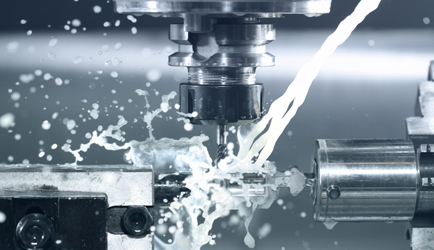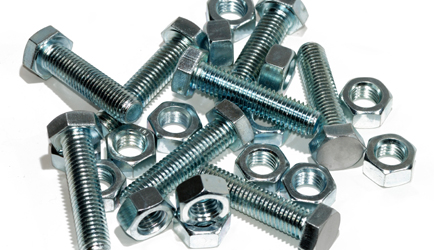In the competitive world of machine tool manufacture, innovation is key. Almost every area of machining is being optimised. One company, Yamazaki Mazak, is to debut 18 machines at the EMO 2015 machine tools exhibition in Milan next month, with live demonstrations in seven zones: multi-tasking, five-axis, turning, vertical machining, horizontal machining, hybrid technology and so-called Smooth technology. Other leading names, such as Citizen Machinery, DMG Mori and Nakamura, are bringing new technology onto the market every month or so. Manufacturers are spoilt for choice.
But, among all these innovations, what’s really edgy rather than simply fine-tuning?
Let’s start with five-axis control. Last September, Yamazaki Mazak introduced Smooth technology. The Mazatrol SmoothX is a five-axis control that can reduce cycle times by up to 30%. “We regard this as a real step change in technology, as Smooth technology not only encompasses computer numerical control but has also optimised machine structures and advanced motion control technology using advanced servo-control technology,” says product manager Mark Hall. This innovation will soon be joined by SmoothG motion control, developed specifically for machines with up to four-axis simultaneous motion control, and SmoothC, developed for entry-level machines.
Five-axis machining is typically used in aerospace, medical, oil and gas and Formula One automotive applications. The real breakthrough is in terms of speed, as the Mazatrol SmoothX is claimed to deliver “the fastest five-axis machining ever achieved”, raising block processing speed from 135m a minute to 540m a minute – quadrupling the typical speed of 0.4ms per block to 0.1ms per block.
Additive manufacturing
3D is always a big draw at shows. Yamazaki Mazak’s new Integrex i-400AM, which stands for additive manufacturing (3D prototyping), can generate near-net shapes using its additive capability, before finishing them with multi-tasking machining. The Integrex i-400AM comes with a SmoothX CNC, and uses laser metal deposition to produce parts with complex geometry in a range of materials.
This machine can offer significant cost savings without increasing the cycle time, says Hall. The machine can take a substrate of material, such as stainless steel, and add, for example, Inconel 718m, to produce a complex part. Traditionally, a part made from Inconel would cost about $8,000. But using this approach, adding Inconel on top of an existing substrate, brings the combined cost to around $2,500.
A range of additive materials can be used, including stainless steel, nickel alloys, cast iron, copper alloys and cobalt alloys, with potential use in aerospace, medical, oil and gas, automotive and other engineering sectors.
Multi-tasking includes the ability to mill and turn together with five- axis machining, whereas traditional manufacturing would have required processing a part with several machines which can now be finished on one machine in one operation. Yamazaki Mazak offers more than 50 multi-tasking machines, and is launching the Variaxis i-1050T. This is a five-axis machining centre with a large machining envelope and gantry box design, equipped with SmoothX control, with full turning capability to handle workpieces up to 1.25m in diameter and 2 tonnes in weight, such as large jet engine components.
Laser integration
Citizen Machinery has created a world first in integrating laser processing on its L20E CNC sliding head turn milling centre. This development opens the door to endless designs of geometric shapes in the walls of tubular bar material, as well as performing normal turning and milling processes. The process can make burr-free holes as small as 0.1mm diameter, and produce non-corners of slots faster – cutting at 300 to 400mm a minute – than a separate electrical discharge machining process.
The machine opens up potential for new design concepts in the medical sector, electronics and micro-industries. Recent demonstrations were carried out on 304 stainless steel, producing medical stent-cutting slots, drilling and marking a logo, as well as turning and milling diameters and flats in a single operation.
DMG Mori has introduced the Lasertec 45 for 3D laser machining and texturing of geometrically defined surface structures, with fine contours and filigree cavities for the manufacture of injection moulds, extrusion dies, inscriptions and engravings. Laser ablation technology offers high repeat accuracy and wear-free machining, and direct processing on the workpiece eliminates the need for separate electrode manufacturing, so drastically reducing production times, especially where filigree parts are concerned.
The ability to drill deep holes is widespread in oil and gas exploration, but has not been achieved so far in the production engineering environment. However, Mollart Engineering in Chessington is now developing the MWC 4289 Acubore system, which will enable a drill to be steered when drilling very deep holes in components. Using the Acubore process for hole sizes between 5 and 65mm, the drill path is corrected by laser ultrasonic technology (LUT) and a series of programmable, three-point roller steadies which support slight rotation of the component being processed.
The process is based on algorithms integrated with a Fanuc 31i control. Data captured from the multi-point LUT system is used to position the drill point’s progress relative to the outside of the component. The system has been proven in the checking of turbine blades, as part of a live, integrated production drilling operation.

Ultrasonic machining of composites
Conventional machining processes for fibre composite materials are often pushed to their technological limits, owing to the high degree of tool wear, often inadequate component quality, and insufficient feed rates. However, new ultrasonic machining systems for composites from DMG Mori target the transmission of ultrasonic vibration into the longitudinal axis of the tool, thereby significantly reducing torsional movement, lengthening tool life and optimising chip removal.
The company has recently developed mobile ultrasonic machining equipment suitable for on-site aircraft maintenance, repair and operations, as well as stationary ultrasonic machining of large aerodynamic composite components for the wind
energy sector.
Fibre takes over from CO2
One significant trend in sheet-metal working is the takeover of fibre laser from carbon dioxide laser cutting. Fibre cutting is typically three times faster than CO2 when profiling thin sheet, and can also cut thick reflective materials such as copper, which CO2 struggles with, as flashbacks tend to damage the optics. Family-run business ML Fabcuts is a big supplier of profile sheet and plate in the South East of Britain, and operates two Bystronic laser cutting machines and a waterjet cutter in a new factory in Crayford, Kent.
The company’s recently installed fibre laser profile features a fibre-optic cable to deliver a laser beam to the point of cutting. The 3m by 1.5m capacity, 4kW BySprint Fiber 3015 is equipped with a shuttle table and ByLoader handling device to assist in loading material weighing up to 890kg. “It’s like having three machines in one,” says owner Matt Levett. The machine cuts 1.5mm mild steel at 28m a minute, more than three times faster than the company’s 4.4kW CO2 laser. It can also cut reflective materials such as aluminium, copper, brass and bronze – the Achilles heel of CO2 machines. Thirdly, the fibre machine also cuts thicker materials and profiles 20mm mild steel at 820m a minute.
Another company, Birmingham Prototypes, has bought a Trumpf
TruLaser cell 7040, a five-axis machine which is claimed to be the first on the market to feature Trumpf’s fibre-guided TruDisk laser technology. The machine will be used for trimming complex fabricated items in the aviation and automotive industries.
Sumitomo has launched a new generation of lubricated film coatings, called Brilliant Coat, on its TI500Z cermet inserts for use when finishing low-carbon and general steels, where a superior finish and dimensional stability are required. The coating is claimed to extend tool life and reduce flank wear on the insert by up to 200% when compared with most conventional cutting tools.
Cermet is an amalgum of ceramic and metal, which comprises titanium carbide and titanium carbonitride cemented with a metal binder, to provide resistance to wear and toughness for the metal.
A new generation of machines mix characteristics to improve performance and take up less space on the factory floor. One is the Mitsui Seiki VGE60A universal thread grinder, which minimises floorspace with a vertical component that eliminates sag between centres, compared with a conventional horizontal approach to thread grinding. As a ‘universal machine’, it can perform a range of grinding processes – including splines, gear teeth, surface, outside diameter and edge grinding – in a single set-up.

Speedy assembly
Another company, machine tool builder Inca Geometric in Canterbury, has developed a system for automated engine piston and ring assembly. The patented, online build concept will allow a four-cylinder engine to be fitted with its piston assembly within 22 seconds, and is being assessed by several leading engine manufacturers.
Heidenhain (GB) and Geo Kingsbury, sole agent for Hermle machines in the UK, recently demonstrated a Hermle five-axis C60 U MT agile machining centre, which can produce parts measuring up to 1,200mm diameter by 900mm high, at an angle. A 1.6-tonne EN8 billet, measuring 815mm in diameter, underwent a complex series of machining operations. One of these operations was A-axis turning, which allows the trunnion to be continuously positioned at any angle while the component on the table is rotated for turning using a fixed tool in the spindle. Apparently, this improves cutter access and allows shorter turning tools to be used for more stable machining. Although other machines on the market can turn at an inclined angle, Heidenhain claims that no other company can interpolate the A-axis while turning.
Meanwhile, Rolls-Royce and Unipart have agreed to establish a joint venture from this autumn, based on Rolls-Royce’s Metlase technology, to deliver manufacturing solutions for advanced fixturing and products in aerospace, automotive, motorsport and the medical sector. The new venture, located in the Advanced Manufacturing Park between Sheffield and Rotherham, will use new technology in a system designed to cut parts development from months to weeks or days.
Looking forward
Two big trends are under way in machine tool circles, according to James Selka, chief executive of the Manufacturing Technologies Association.
The first, he says, is “the move towards 3D applications, using hybrid machines from the likes of Matsuura, Yamazaki Mazak, DMG Mori and Renishaw”.
The other trend relates to the internet. “Industry 4.0 will be a paradigm shift, as the internet of industrial things promises to re-industrialise the UK and Europe using mass customisation for a responsive, service-based industry, as more and more machines are connected to each other by the internet,” he says.
In Europe, 2-3% of machines are connected via the internet, estimates Siemens. The company predicts that, by 2020, 60-80% of machines will be connected, with enormous benefits for the digital factory of the future.
It seems a revolution is under way in machine tools that will put most of the above areas of innovation in the shade.